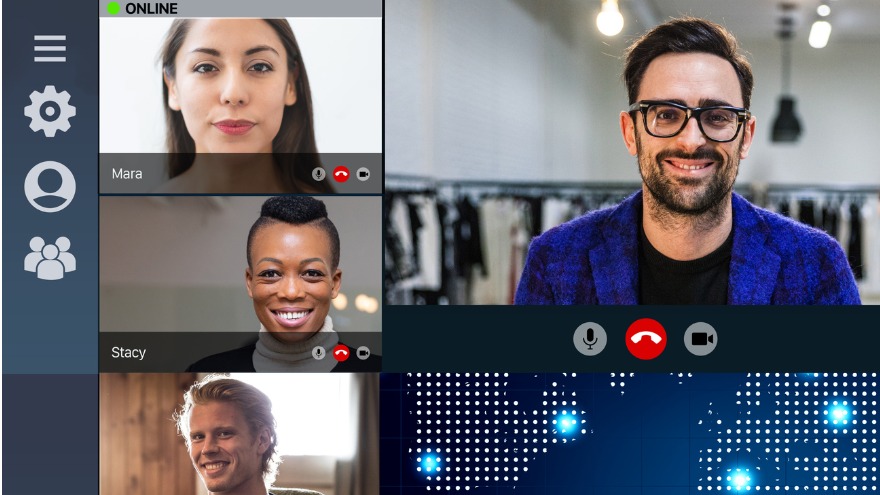Once the decision is made to go virtual, what is the first thing you do after the airline and hotel reservations have been cancelled? Eventually, you are going to have to pick the platform to stream all the great content you have been developing. With so many to choose from, how do you decide? Smart Meetings asked Ben Chodor, president of Intrado Digital Media, the company behind the virtual event platform INXPO, which was used for ASAE’s record-breaking 2020 Virtual Annual Meeting & Exposition.
1. How Can We Keep Audiences Engaged?
“Virtual events need to be designed with an end user in mind,” said Chodor, who has a book coming out in September titled, Transitioning to Virtual and Hybrid Events. He invited meeting professionals to close their eyes and envision the attendee sitting in the home office with dogs and kids and doorbells ringing and all kinds of distractions around. Design something that will keep that person glued to the screen. Today’s platforms can enable immersive experiences with easy navigation and fun gamification. “Even serious people who tell you they don’t like gamification like it when you give them a challenge,” he confided.
Regardless of the platform, the content has to be high-quality. Speakers need to be trained to connect through that lens. “The virtual audience has little patience for content that isn’t amazing,” Chodor said.
He gave the example of United Fresh Produce Association, which created United Fresh LIVE! 365, a year-long marketplace for 7,600 people with virtual access that includes all the senses—taste, smell and touch. Organizers translated the colorful, artsy theme to the virtual interface, included chat options, sign-up lists for mailing food samples and other items normally handed out on expo floors. Vendor “booths” offered 1:1 sessions to engage with visitors and chef demonstrations to bring it to life.
2. Will They Come?
Chodor warned that a new meeting format can’t be marketed the same old way. “You have to promote through all the social channels for hybrid meetings,” he said. That way you can reach people who live farther away from the venue and dig deeper into the layers of the organization so workers can participate.
You also need to start promoting earlier, he advised. People’s calendars are filling up. “Don’t stop what you are doing, but amplify it in social, get interviewed in podcasts and think about how to reach those new audiences. “Go where the audience is,” he said.
3. Will It Break?
With all that extra marketing and accessible brand reach, you may have an enviable problem. Many virtual events are exceeding audience expectations beyond their wildest dreams. ASAE Virtual Annual Meeting & Exposition drew more than 14,000 registrations, 70 percent of them first-time attendees.
That is why Chodor suggested that before you ask a vendor about all the bells and whistles, ask:
- What happens if 10,000 people log on at same time?
- Can registration handle that at once?
- Can you do Q&A and open chat if it is an audience that is orders of magnitude larger than expected? Will it be the same user experience?
- What is your redundancy simultaneously?
Once you know the capabilities and limitations, you can set your velvet rope policy. “That makes the event more desirable,” he said.
4. Should We Charge?
Chodor found that at the beginning of the pandemic, in March and April, most events were opening to all for free. They were just scrambling to stay connected. In May, June and July, about a quarter of event organizers started to charge for streaming access, often with an on-demand component available for a certain amount of time after the live date. Now about half of those who were charging for live events are charging for virtual content, Chodor said.
The longtime industry watcher predicted that many will adopt a tiered pricing structure—silver, gold and platinum, for instance—depending on level of access. “That is power of a virtual event. You can tailor the experience however you want,” he said.
Meeting professionals are also getting more comfortable monetizing by charging sponsors to be in front of all those eyeballs. That is why it is important to pick a platform that has robust reporting capabilities.
“It is important to show the ROI,” he said.
5. What Questions Aren’t Getting Asked, But Should?
When doing a demo, ask what features are available that you might not be taking advantage of. Ask how you can increase engagement and gamify. Inquire about the ability to build a library to offer after the event for people to review, watch sessions they missed and access content, etc.
6. Are We Going to Be Doing This Forever?
“The industry used to be scared hybrid would cannibalize their front door ticket sales, but now they are seeing that they are increasing the audience and expanding the brand. It is an opportunity,” said Chodor. Establishing a hybrid streaming component for future in-person meetings will create more leads for exhibitors and sponsors—a win-win.
And it is only going to get better with the addition of automation and predictive artificial intelligence capabilities, allowing for event hosts to personalize the experience based on attendee preferences.
Virtual event management could also be streamlined as more expertise is built and products are integrated into end-to-end solutions.





